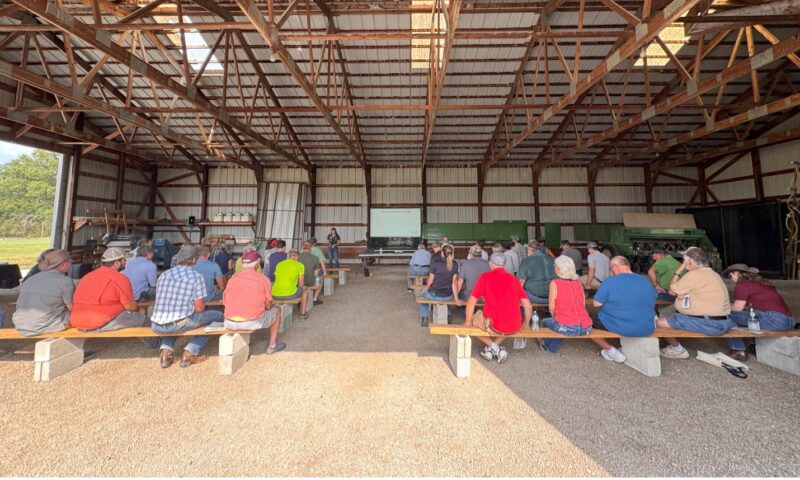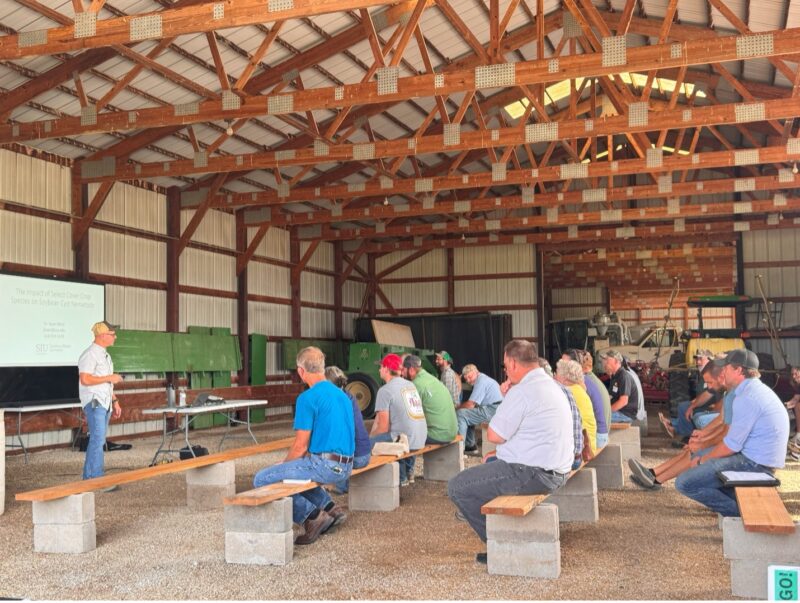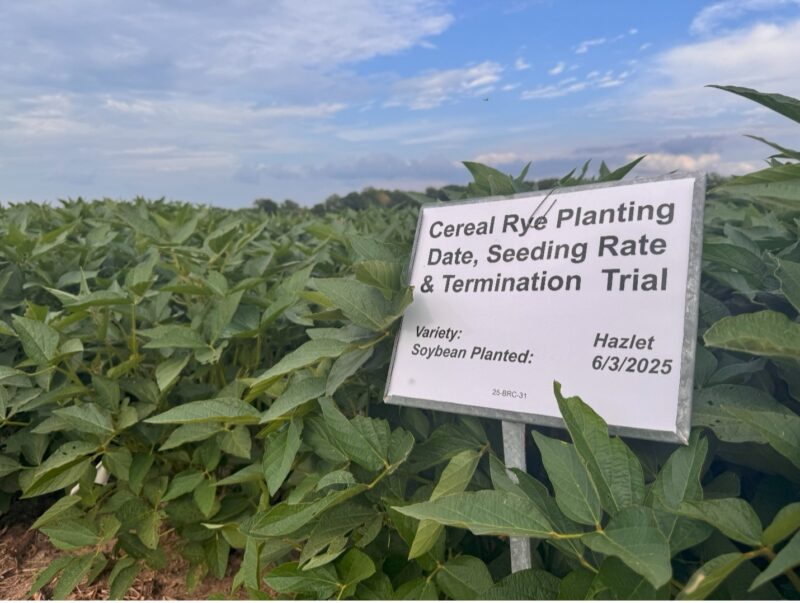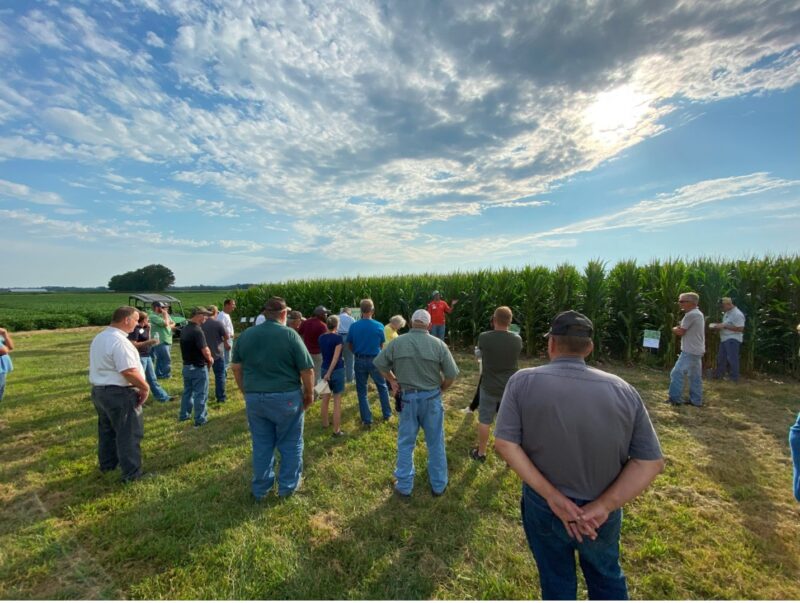The Illinois Soybean Association’s (ISA) Agronomy team co-hosted a cover crop-focused field day Aug. 7 with Nathan Johanning, a University of Illinois Extension researcher, at the Southern Illinois University (SIU) Research Center.
The event opened with presentations from ISA staff on the association’s role, how checkoff dollars support Illinois farmers, and the cover crop resources available through ISA. The team also highlighted ISA’s recent partnership with the Natural Resources Conservation Service (NRCS). Through programs such as the Environmental Quality Incentives Program (EQIP), Conservation Stewardship Program (CSP), and Regional Conservation Partnership Program (RCPP), NRCS offers technical and financial assistance to farmers to help increase cover crop adoption. Attendees were encouraged to connect with their local county NRCS offices for support with cover cropping and other conservation practices.
In addition to NRCS support, ISA offers technical resources, with some checkoff funds invested in research to advance agronomic knowledge for Illinois farmers, including conservation activities such as cover crops.
One ISA checkoff-funded project highlighted at the event focused on the relationship between cover crops and soybean cyst nematode (SCN). Dr. Jason Bond, professor of plant pathology at SIU and principal investigator of the project, presented findings on how cover crops can influence SCN populations. Bond explained that cover crops may act as trap crops or release compounds that are toxic to nematodes, trigger egg hatching before a suitable food source is available, or promote the growth of competitive microorganisms that suppress nematodes.
Preliminary research results from the 2025 season showed that cereal rye reduced SCN population densities by 14–30% between fall planting and soybean harvest the following season. The study also tested a clover cover crop, though its results were less consistent. Bond also shared findings from other projects showing that winter crops such as wheat and ryegrass reduced SCN populations, demonstrating the potential of grass cover crops as a tool for managing SCN pressure.
Johanning then led the group on a tour of several of his cover crop research studies at the SIU Research Center, focusing on cover crops in both corn and soybean systems. Attendees observed a variety of trials featuring single species cover crops, multi-species mixes and different planting and termination timings. The tour also included a visit to an ongoing ISA checkoff-funded project titled Understanding the Importance of Cover Crop Planting Dates in Illinois Row Crop Production. Corn and soybean yield data will be collected from these trials this fall, so stay tuned, as we plan to host another event this winter to share this year’s findings.
The evening concluded with dinner at Eckert’s Cider Shed, where John Pike of Pike Ag LLC shared practical strategies for overcoming common cover crop challenges. Pike emphasized that successful outcomes depend on proper cover crop management and cited a trial he conducted in southern Illinois as one example.
In his study, he evaluated how the timing of cereal rye termination affected weed suppression and soybean yield. He found that terminating the rye too late in a dry year reduced soybean yields compared to a no-rye control. However, earlier termination in another part of the field resulted in higher soybean yields than the no-rye area, reinforcing that with the right timing, cereal rye can still be a valuable tool in soybean systems.






 and then
and then